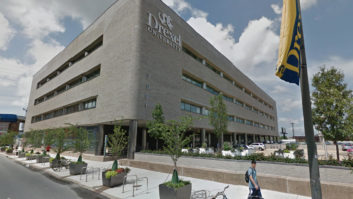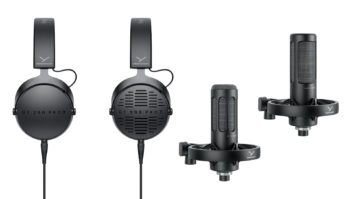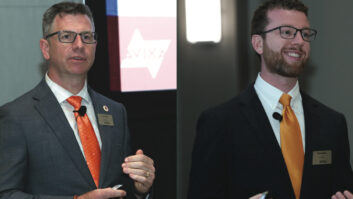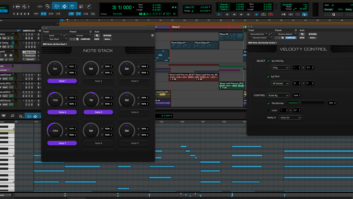New York, NY (February 22, 2019)—A group of manufacturers made something of a splash when, at InfoComm 2018, they announced Milan, said to be the first fully realized standards-based protocol built for deterministic, interoperable, future-proof media networking in the pro AV market. More recently, at the 2019 ISE (Integrated Systems Europe) show in Amsterdam in early February, many of Milan’s supporters—a group that includes AudioScience, Avid, Biamp, d&b audiotechnik, L-Acoustics, Luminex and Meyer Sound—expanded their Milan-capable product catalogs.
Milan (Media-integrated local area network) incorporates a subset of specifications defined particularly for the pro AV market—specifically media streams, formats, clocking and redundancy—that are built on top of the AVB (Audio Video Bridging) open standard networking protocol developed by the IEEE (Institute of Electrical and Electronics Engineers). Milan’s supporters are all members of the Avnu Alliance, the consortium promoting the AVB/TSN (Time-Sensitive Networking) standards and their certification.

Avnu-certified products are being adopted across various markets, including automotive, consumer and industrial, in addition to pro AV. “That’s a pretty big umbrella,” says Derk Hagedorn, Avid’s senior marketing manager for the company’s live sound systems and music notation. “It calls on a lot of functionality that is not important to audio. And there are things we want that are very important for pro audio but may not be of any interest to the car manufacturers. So Milan grew out of this subgroup of audio developers that were using AVB.”
Audio networking is nothing new in touring concert sound, but AVB/ TSN has been quietly chalking up some major successes on the road over the past two years or so. In 2017, country superstar Dierks Bentley’s What the Hell World Tour trekked across North America with a Meyer Sound LEO family reinforcement system said to be the first on the road to be digitally interconnected by a Galileo Galaxy networked platform using AVB/TSN. Metallica’s WorldWired Summer Tour in 2017 boasted what was at that time the most extensive implementation of Meyer Sound’s Galileo Galaxy networked platform: 14 Galaxy frames and 10 Extreme Networks switches.
The North American leg of Arcade Fire’s Infinite Content Tour at the tail end of 2017 represented L-Acoustics’ first official tour using an AVB/TSN system, which incorporated 92 AVB-capable LA12X amplified controllers networked with a pair of redundant Meyer Sound Galaxy units using Extreme Networks switches. In October 2018, Meyer Sound announced that AVB networks were used to interconnect more than a dozen Galaxy platforms for a major European rock festival—Roskilde, in Denmark—for the first time, using Luminex switches.
Pushing the Milan specification forward, group members have been rolling out compliant products since the 2018 InfoComm launch. Indeed, at that show, L-Acoustics introduced one of the first: the multifunctional P1 AVB processor, audio matrix, bridge and measurement platform. L-Acoustics’ Avnu-certified LA4X and LA12X amplified controllers are also Milan-compliant, according to an October 2018 statement from the company.

At the 2019 NAMM Show, Avnu Alliance officially welcomed Adamson Systems Engineering into its pro AV segment. On the show’s opening day, the Canadian speaker manufacturer introduced its first compliant product, the CS7p, a dipole two-way, full-range design that Adamson states is the world’s first network-redundant, Milan-ready loudspeaker.
According to Morten Lave, network architect for Adamson, “With the CS7p and other upcoming CSSeries offerings, Adamson has taken steps to ensure compliance with Milan, but we have also included a fully redundant, daisy-chainable networking topology to ensure that the signal chain is the most manageable and secure in any networked audio loudspeaker product available on the market today.”
In an online video from Adamson explaining the company’s support for Milan, Lave says, “In order to also interoperate with third-party devices, a protocol like AVB is not enough. We need to have an interoperability specification, a standard. Milan is such a specification.”
AVB/TSN networks require certified switches to operate, and there are numerous available from companies including Cisco, Control4 and Extreme Networks. On opening day of the 2019 ISE show, Luminex Network Intelligence announced that its GigaCore Ethernet switches are now Avnu-certified to support the Milan protocol, in addition to Dante and AES67. On its booth at the show, Luminex presented an interoperability demonstration of new Milan-enabled devices.
Milan supporters including Adamson, d&b audiotechnik, L-Acoustics and Meyer Sound all showcased their respective Milan-ready products at ISE. In addition, L-Acoustics promoted the open source, free-to-use library it has published, available on GitHub, that offers a set of tools for controlling AVB and Milan devices using the AVDECC protocol (AVB Discovery, Enumeration, Connection management and Control; IEEE1722.1-2013) and to meet Avnu Milan specifications. The library is compatible with the recently published Milan Discovery, Connection & Control Specification for Listeners & Talkers, which delivers a defined profile for devices with a small subset of the standard. It is intended to remove all ambiguities from this subset to achieve interoperability at the control layer.
Also at ISE, d&b launched its DS20 audio network bridge, an interface between Milan networks and AES3 digital audio signals that offers distribution of Ethernet control data. The 1RU box, for touring and installation, incorporates a five-port AVB switch and sends metadata, including Milan channel labels and cabling information, via the AES3 channel stream to d&b’s four-channel amplifiers.
Avid implemented AVB in its current generation of live sound desks, beginning with the Venue | S3L, to connect all the system components, such as the surface, processing engine, stageboxes and peripherals, says Hagedorn. Avid incorporates its own AVB switches into the equipment, he adds.
Because it’s an open standard, “If we want to do a down-market product, we have the flexibility to not have a big licensing fee or proprietary chipset to implement,” he notes. Pro Tools also ties into the system using AVB, he says, and since the protocol is supported as standard in a Mac, a single Ethernet cable enables 128 channels of recording at 96 kHz for archiving or virtual soundchecks.
AVB and Milan proponents are quick to point out its ease of use and plug-and-play functionality. Appearing in Adamson’s online video with Lave, the manufacturer’s director of R&D, Benoit Cabot, comments, “Milan ensures that you don’t need to be a network specialist to set up a concert….what’s important is that it’s simple.”
He adds, “It’s going to work because all the leading manufacturers in AV are making Milan together.”
Milan • www.avnu.org/Milan







